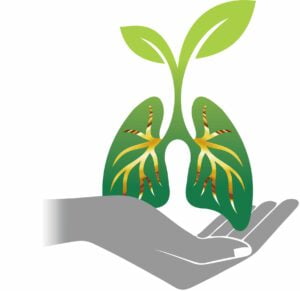Respiratory Care: Healthy lungs, Healthy birds

Dr. Vandana Sharma, Dr. Saurabh Agarwal
Extreme selection pressure for high growth rate and feed conversion ratio (FCR) puts high demands on the metabolic processes. In poultry production, while heat stress has been a rising concern for producers and scientists, cold stress has also caused massive economic loss worldwide. Poultry exposed to acute cold stress has shown a clear suppression in development, survival and egg production. Abrupt changes in the weather conditions can affect the performance of chickens by reducing body weight gain and egg production, in addition to increasing mortality and susceptibility to disease. The influence of this type of stress during the brooding period can have devastating effects on the immunity and future performance of the flocks. Climatic stressors also affect B-cell immunity as well as T-cell mediated immunity, therefore increases susceptibility to diseases such as salmonellosis and colibacillosis in chickens and mycoplasmosis in turkeys. Cold air when enters the farm it settles down and displaces the warm air. This causes inability of cold air to absorb excessive humidity and litter gets caked. Cakey litter gives rise to high amount of ammonia and carbon dioxide and causes inflammation of the respiratory tract and thereby causing respiratory problems.
Avian respiratory system is unique
Respiratory system is integral part of poultry’s body, as it has number of very important functions including the supply of oxygen, the removal of carbon dioxide, thermoregulation, vocal communication and energy metabolism. The avian respiratory system has a unique structure (air sacs) that provides the birds the most efficient respiration amongst all terrestial vertebrates. This is because highly energetic activities such as flight needs a fast metabolism together with a very efficient oxygen supply. Also, avian lungs need to extract a greater concentration of oxygen from inhaled air, to be able to fly at high altitudes. That’s why birds have a larger area for oxygen/carbon dioxide exchange in lungs. In case of mammalian lung, 20% of the blood is in contact with gas exchange membranes, while in avian lung, 80% of the blood is in contact with gas exchange membranes. Moreover, to allow a faster oxygen exchange, the gas exchange membranes are thinner in avian lungs than in mammals.
Vulnerability of avian respiratory system to infectious pathogens
The difference in the anatomy of avian respiratory system with other vertebrates makes gas exchange more efficient, but at the same time it is easier for air borne pathogens to penetrate the barrier and infect the birds. The structural efficiency of the bird’s respiratory system to oxygenate does not necessarily match the system’s ability to protect against infection and contaminants. In addition to lungs, air sacs that permit a unidirectional flow of air through the lungs, which causes big proportion of the air moving through lungs to be fresh air with a high oxygen content. During inhalation, incoming air flows through the trachea directly into posterior air sacs. Then it moves into lungs, where gas exchange happens, and afterwards into the anterior air sacs, to be finally exhaled through the trachea and the nasal cavity. Moreover,
lower respiratory is devoid of ciliated epithelium and hence devoid of barriers, so make prone to pathogens to invade easily.
Respiratory distress etiology is very complex
In case of respiratory diseases in poultry, uncomplicated infections with single agents are the exception. Under commercial conditions, complicated infections involving multiple etiologies with viruses, mycoplasmas, bacteria, immunosuppressive agents, and unfavorable environmental conditions are more commonly observed than single infections. In addition, respiratory reactions induced by routine vaccination programs may themselves play a major role in the development of respiratory disease. Sometimes harmless microbes that do not cause disease in healthy birds can express pathogenic potential, followed by respiratory insult. One of the classic examples to explain this is Complicated chronic respiratory disease (CCRD). Uncomplicated Mycoplasma gallisepticum infections (CRD) ordinarily results in respiratory signs, sinusitis, and airsacculitis, mild or even subclinical disease, but interactions with Newcastle disease virus or infectious bronchitis virus makes birds immunocompromised after vaccination are known to increase the severity of infection. Invasion of E. Coli makes condition worse and increase the severity of infection, makes it complicated.
Pathogenesis of Respiratory discomfort
The upper respiratory tract is continuosly exposed to variety of microbes; yet, disease is not necessarily a common event. Natural and acquired defense mechanisms plays their role efficiently to eliminate foreign infectious agents, inhibit replication, or prevent colonization of tissues by microbes. The mucociliary apparatus of the respiratory tract is a highly efficient system for the elimination of microbes and particulate matter. Some viral infections causes the deciliation of parts of the respiratory tract and lysis of infected cells, resulting in accumulation of cellular products and debris. This creates an environment favorable for bacterial multiplication and attachment to cells, which are important events in the pathogenesis of bacterial infections. Because of the possible complex etiology of respiratory it is important to understand the role of the different agents in the disease process.
Poor air quality pave the way to infectious and opportunistic pathogens
Confined flocks or small flocks housed in poorly ventilated, wet, overcrowded facilities overnight may suffer from Ammonia exposure. Exposure to high concentration of ammonia may result in damage to the upper respiratory tract, photophobia, excess lacrimation and constant attempts to rub the eyes. Any damage to the respiratory tract opens door to secondary infections. Lime toxicity is likely to manifest itself as ulcerative changes along the GI tract. Dust present inside the house consists of tiny particle, light enough to stay suspended in the air which causes difficult breathing. Moreover, in a dusty environment, 1 m of air can contain more than 10 million microorganisms which consists of Bacteria, Viruses, Fungi & Parasitic eggs.
The trachea and bronchi walls are covered with cilia. Contraction of cilia cause the mucus and particles sticking inside to move towards the upper parts of the respiratory tract, where they are sneezed out or swallowed. This process is “mucocillary escalator”. Sometimes if it is saturated with too much dust, paralyzed by an excess of ammonia concentration, or destroyed by a viral infection, this system cannot effectively play its defense role. Any such attack on the defenses of the respiratory system will affect the quality and quantity of mucus in chickens, turkeys and layers. If mucus is too viscous or too abundant it can cause a blockage in the trachea. This may result in a secondary bacterial infection or animal death by asphyxiation.
Prevention is better than cure
• Environment should be clean and dust-free & properly ventilated. Minimize exposure to environmental conditions that contribute to disease and stress
• Adequate rest, feed and water should be provided especially after transportation
• Always make sure birds that birds receive adequate levels of essential nutrients such as vitamins and minerals
• Nutritional soundness also helps prevent disease and improves immune function.
• Litter should be clean and dry as wet litter harbours infection
• Scheduled vaccination should be followed strictly
• Introduction of new birds in the flock should be quarantined, before adding them to the original flock
• If any ill birds are reported, separate them immediately to prevent the spread of infectious disease
• Alternative treatment other than conventional antibiotic treatment must be practiced in the farm
Treatment
As soon as birds are diagnosed with respiratory distress isolate them from the flock and place in a safe, comfortable, warm location with easy access to water and food. Stress should be minimised. Treatment are recommended depending on the cause & the symptoms like anti-infectious agents (Antibiotics like Levofloxacin, Tiamulin, Cloxacillin and Sulfas), Antiparasiticides, Nonsteroidal anti-inflammatories, Bronchodilators, Mucolytics, oral rehydration fluids). Always consult a veterinarian for suitable treatment.

Factors causing respiratory distress like Cold stress, Heat stress, Excessive ammonia & dust or immunosuppression are usually underestimated, which leads to fall in trap of antibiotics or chemotherapeutic agents. These conventional therapies are long lasting, complex & extremely costly which gives economic burden to the farmers. In addition to this, they possess harmful side effects such as antibiotic resistence & shorter production period. This makes farmers to seek for alternative methods of prophylaxis. For effective prophylaxis of the respiratory tract, essential oils came for rescue. During respiratory distress, the bird shows lower oxygen levels, which results in a drop of vitality and in the discomfort of the animal & anorexia. Besides that, mucus accumulation is a risky medium for bacterial growth.
Expectorant essential oils, such as eucalyptus, peppermint, basil & thyme oil and many more, gives relief through several mechanisms:
• Rich “refreshing” or “cool” flavor & odor, eases breathing, gives a feeling of comfort, hence reduces stress
• Eliminates the mucus accumulation, which is a substrate for secondary bacterial infections due to their potent antibacterial properties
• Help to regenerate the respiratory epithelium, especifically the cilia in the trachea that act as a barrier against the entry of particles and pathogens
• Reduce cough and inflammation
One can use combinations of essential oils to enhance their therapeutic properties. Nutricare offers power of Eucalyptus oil, Menthol oil, Thyme & Cinnamon oil in form of RESPOMINT-25, which is promising supportive therapy to respiratory tract from microbes due to its rich antibacterial, antiviral, antifungal, antioxidant, antiinflammatory & immunomodulatory properties. Beside this, it is effectively used for air and water sanitation from pathogens.
• Eucalyptus oil combats respiratory inflammation. Its active constituents, Cineole and Eucalyptol, causes irritation to the mucous membrane facilitating removal of discharge along with harmful dusts. It acts as an expectorant, antitussive and provides symptomatic relief of cold and catarrh of the upper respiratory tract.
• Menthol oil is a natural decongestant that helps in breaking mucus and reduces inflammation of nasal catarrh. Menthol, a cooling compound, possess beneficial effects such as bronchodilation, suppression of cough and analgesic activity. It’s disinfection effect on bronchi, prevents infections in the respiratory tract of birds.
• Thyme oil is potent broncholytic, secretomotoric, antimycotic and antimutagenic. Thymol exerts an antispasmodic effect on smooth muscles of the trachea and affects the ciliary activity by influencing respiratory clearance. It has anti-inflammatory and antioxidant effects.
• Cinnamon oil has Cinnamaldehyde which possesses significant antipyretic, antianaesthetic, antiallergic, antimutagenic and antioxidant activities. It provides protection through radical scavenging action. Cinnamaldehyde is widely used as an antimicrobial, which effectively inhibit the growth of Gram-positive and Gramnegative bacteria in planktonic form. It inhibits the formation of biofilms, which are directly related to infections.
RESPOMINT-25 can be used in drinking water @ 0.25 ml per litre of drinking water as well as in spray form for aerial sanitation @ 0.2% solution and fog until surface feels moist



